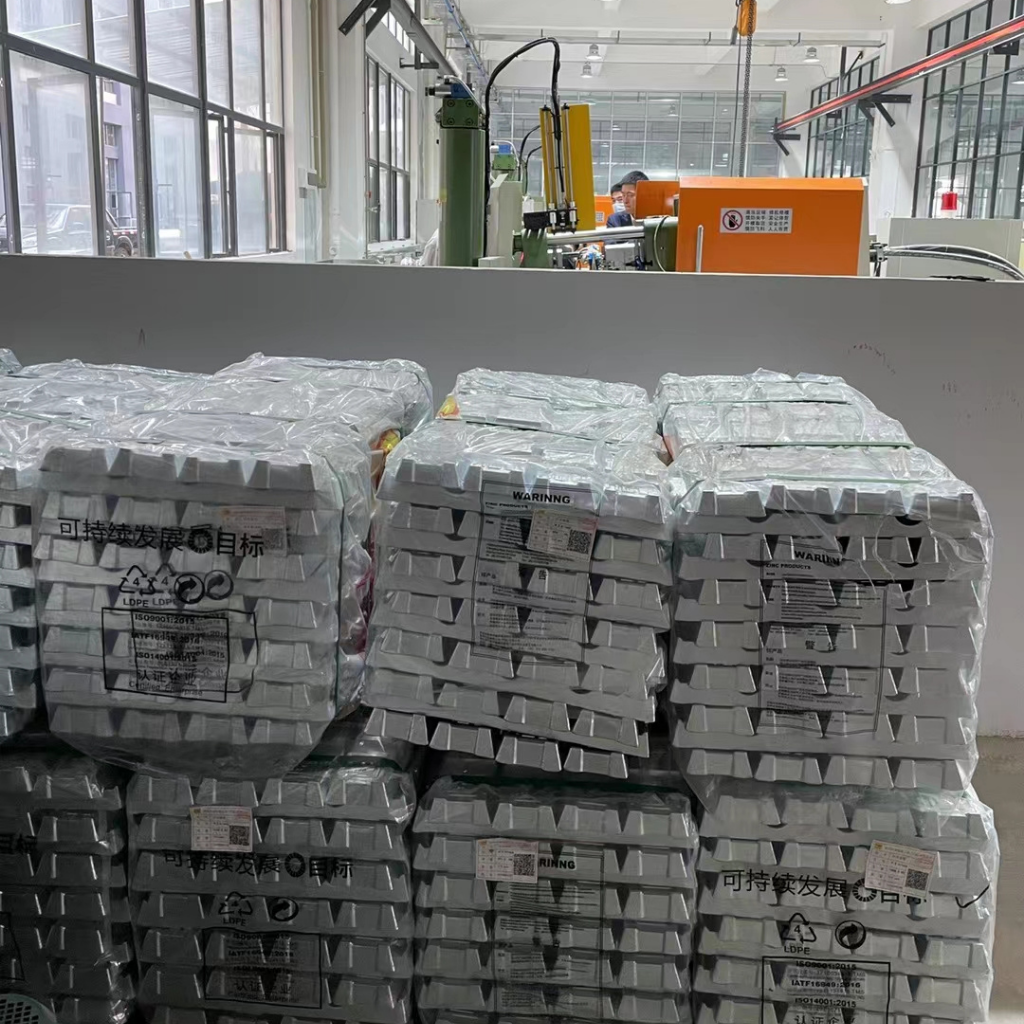Metallic Materials
Metal materials can usually be divided into non-ferrous metals and ferrous metals.
Here are some of the metal materials commonly used in the lock industry, mainly including stainless steel, zinc alloy, copper, and aluminum alloy.
(A) stainless steel
Common grades are 304, 316, 201, etc. 316 corrosion resistance is better and can be used in more demanding conditions.
201 – widely used in architectural decoration, municipal engineering, highway guardrails, hotel facilities, shopping malls, glass handrails, public facilities, and other places, but also used in the manufacture of stainless steel pipe handles, stainless steel hinges, split handles.
304-i.e. 18/8 stainless steel. the GB grade is 0Cr18Ni9.
316-After 304, the second most widely used steel grade, mainly used in the food industry and surgical equipment, the addition of molybdenum elements to obtain a special structure to resist corrosion. SS316 is commonly used in nuclear fuel recovery devices. 18/10 grade stainless steel is also usually qualified for this application.
Advantages of stainless steel
1) Will not rust, acid, and alkali resistance
2) Hardness and rigidity are very good, using a very thin material is still very strong
3) The use of precision casting (non-pressure casting), the mold cost is very cheap, far lower than the zinc alloy mold, so much so that the layman will be misjudged. (Investment casting or lost wax casting: wax melting process, mold conversion)
4) High-temperature resistance
Disadvantages of stainless steel
1) expensive (mainly nickel)
2) Because of the toughness, so the machining is quite laborious, tool wear serious. And stainless steel stamping rebound, high punching pressure, die wear fast.
3) Monotonous surface treatment, in actual use only sanding, bright, sanding gold, bright gold four (the latter two are generally reached by plating PVD), so it is difficult to achieve a colorful color. At present, it can be plated, but the cost is high and not very economical.
(B) Copper
Copper: specific gravity of 8.92, melting point of 1083 degrees, the price of pure copper is about 50,000 yuan / ton.
Copper’s biggest disadvantage is “expensive”, there are some other small disadvantages such as the surface is easy to bruise due to the lack of hardness.
The brass used in locks are.
H65-tensile parts, such as brass ball handle.
H62 – commonly used as a key plate.
H62-usually used as a lock panel.
HPb59-1 – Commonly used as the main profile of the lock cylinder and lock body.
A: H62: H – “yellow” copper, 62 – average copper content (%), the rest is zinc.
B: HPb59-1: H – “yellow” copper, Pb – lead, 59 – average copper content (%), 1 – average lead content (%). The rest is zinc.
It should be noted that in general copper is rarely processed by way of casting, such as copper ball handle is stamping or hydraulic by stretching die, and the bullet lock cylinder with copper key is made by copper plate punching, the only blade lock with copper key is manufactured by die-casting.
- The advantages of copper
1) Easy to process, punching, turning, milling, grinding (polishing) are very easy.
2) It is not easy to rust.
3) The plating effect is also the best because of the good affinity with other metals (many other metals have to be plated with copper first).
4) Considered to be a relatively clean material (compared to zinc alloys)
5) Copper also has some excellent qualities, such as electrical conductivity (not used in our products, but widespread demand has caused upward pressure on prices)
6) Copper processing scrap has a high value. Copper scrap can be directly returned to the furnace to become brass, so factories calculate costs without taking scrap into account.
‘(C) zinc alloy
Zinc alloy is a metal material widely used in locks, with zinc as the base and other elements added to the composition of the alloy. Due to their low price, zinc alloys can replace copper in many applications.
- Types of zinc alloys
The traditional die-cast zinc alloys are 2, 3, 5 and 7 alloys, and the most widely used at present is No. 3 zinc alloy. In the seventies high alumina zinc based alloys ZA-8, ZA-12, ZA-27 were developed.
Zamak 2: Used for mechanical parts with special requirements for mechanical properties, high requirements for hardness, good wear resistance and general requirements for dimensional accuracy.
Zamak 3: Good fluidity and mechanical properties.
Used in castings with low requirements for mechanical strength, such as toys, lamps, decorations, and some electrical parts.
Zamak 5: Good flowability and good mechanical properties.
Used in castings with certain requirements for mechanical strength, such as auto parts, electromechanical parts, mechanical parts, electrical components.
ZA-8: Good fluidity and dimensional stability, but poor fluidity.
- Advantages of zinc alloy
1) Cheaper (compared to copper)
2) It is easy to cast because of its good fluidity after melting. It can be cast directly into a variety of complex shapes, eliminating a lot of machining procedures.
3) Moderate hardness, not very high, easy to polish, also can do some fine machining after die-casting.
4) It is easy to plating, the visual effect after plating can be comparable with brass.
5) No iron absorption when melting and die-casting, no corrosion of the die, no sticky mold.
6) Low melting point, melting at 385℃, easy to die-casting. - disadvantages of zinc alloy
1) Melting point is low, so it is not suitable for fireproofing.
2) Poor abrasion resistance, will wear and deformation after rubbing with harder metals such as steel.
3) It contains a small amount of lead, which is slightly harmful to human body (some Nordic countries do not promote the use of).
4) It is considered to be a base metal and people who pursue a luxurious life generally do not use zinc.
5) Processing requires the opening of molds and molds are more expensive (generally not less than $5,000) and take a certain amount of time, with factories generally requiring 40 days (actually it can take up to about 10 days).
6) It needs the support of large quantity orders. - Zinc alloy processing methods
The most common processing method for zinc alloys is die-casting. The process is to first dissolve the zinc ingot and then inject it into the mold cavity under high pressure, and then remove it after it cools.
Factors that determine the quality of zinc alloy products.
Raw materials: It is generally believed that the quality of Australian zinc imported from Australia is better. Several large domestic zinc factories are also good, most of the large factories are located in Guangxi Autonomous Region. Since the ratio of various metals in zinc alloy has a large impact on the later plating, some factories keep the recipe secret. Zinc alloy scrap can be reused, but good factories will sell it.
Die-casting machine tonnage: Common tonnage (pressure) are 88 tons and 160 tons. The newness of the die-casting machine has an impact on the product, and if a factory that uses a lot of casting parts, it is necessary to count their die-casting machines.
Mould manufacturing level: Zinc alloy moulds need to be done by professionals, especially for parts with complex shapes. This is because it is important to consider how the liquid metal flows inside the cavity, how to exhaust the air, how to reduce the fussiness when closing the mold, and to make the closing marks less visible. Mold design is not good, then the good die-casting machine will also make parts with sand holes, perfect mold can even make parts out without polishing and direct plating.
(D) aluminum alloy
Aluminum alloy is the general name of aluminum-based alloy. The main alloying elements are copper, silicon, magnesium, zinc and manganese.
Aluminum alloy has low density, but relatively high strength, close to or more than high-quality steel, good plasticity, can be processed into a variety of profiles, has excellent electrical conductivity, thermal conductivity and corrosion resistance, widely used in industry, the use of second only to steel. As the most important feature of aluminum is light, manufacturing the same volume of parts, aluminum products than other metals such as zinc alloy light several times. Therefore, although the price of raw materials is higher, the price of finished products is low on the contrary.
Aluminum is used in our products in a variety of applications such as die-casting (e.g. handles) and profiles (e.g. flooring grommets).
The largest producer of aluminum profiles in China is in Nanhai, Guangdong.
Due to the fact that the production of aluminum consumes huge amounts of electrical energy, the combination of bauxite and cheap energy has resulted in an extremely competitive product for Russian aluminum.
- Classification of aluminum alloys
Aluminum alloys are divided into two categories.
1) Cast aluminum alloys, used in the cast state; the most commonly used in our products is die-cast aluminum.
(2) Deformed aluminum alloys, which can withstand pressure processing and have higher mechanical properties than cast state. It can be processed into various forms and specifications of aluminum alloys. It is mainly used for manufacturing aviation equipment, daily necessities, doors and windows for construction, etc.
- Advantages of aluminum alloy
1) The finished product is cheap (aluminum has the largest storage in nature).
2) Stable nature, aluminum will surface oxidation without any protection, and the protective film formed after oxidation makes it hard to be corroded.
3) Can be made on a variety of wood grain.
4) The strength is relatively high, close to or more than high-quality steel, good plasticity, can be processed into a variety of profiles.
5) It has excellent electrical conductivity, thermal conductivity and corrosion resistance. - Disadvantages of aluminum alloy
1) Can be plated, but not all can be plated well.
2) The molded parts of the aluminum alloy after die-casting are difficult to process.
Aluminum is the most abundant metal on earth, and it is an environmentally friendly material, but the difficulty lies in the surface treatment process, only anodic oxidation is available in the past, and the problem of electroplating has been overcome recently, so it can achieve any surface treatment needed, but the single color has been matured, and the color combination is not stable, but a good factory polishing is no problem. The difference between anodic oxidation and electroplating is that electroplating is to attach other metals to the mother body, while anodic oxidation is to directly turn the surface of the mother body like plowing, and then harden, so its contact with air will further oxidation, the oxide layer protects the mother body from rust and corrosion, claiming that it will never fade. The world does aluminum handle Germany FSB, with a hundred-year history, the thickness of its oxide film is 15-20μm.
In daily use, the material of the mortise lock is stainless steel; the material of the handle is stainless steel, zinc alloy, or aluminum brass; the material of the lock cylinder is brass, zinc alloy, or aluminum.
We should choose the right material according to the using environment, fire-rated or not, and the cost, etc., to choose the most suitable produt.


